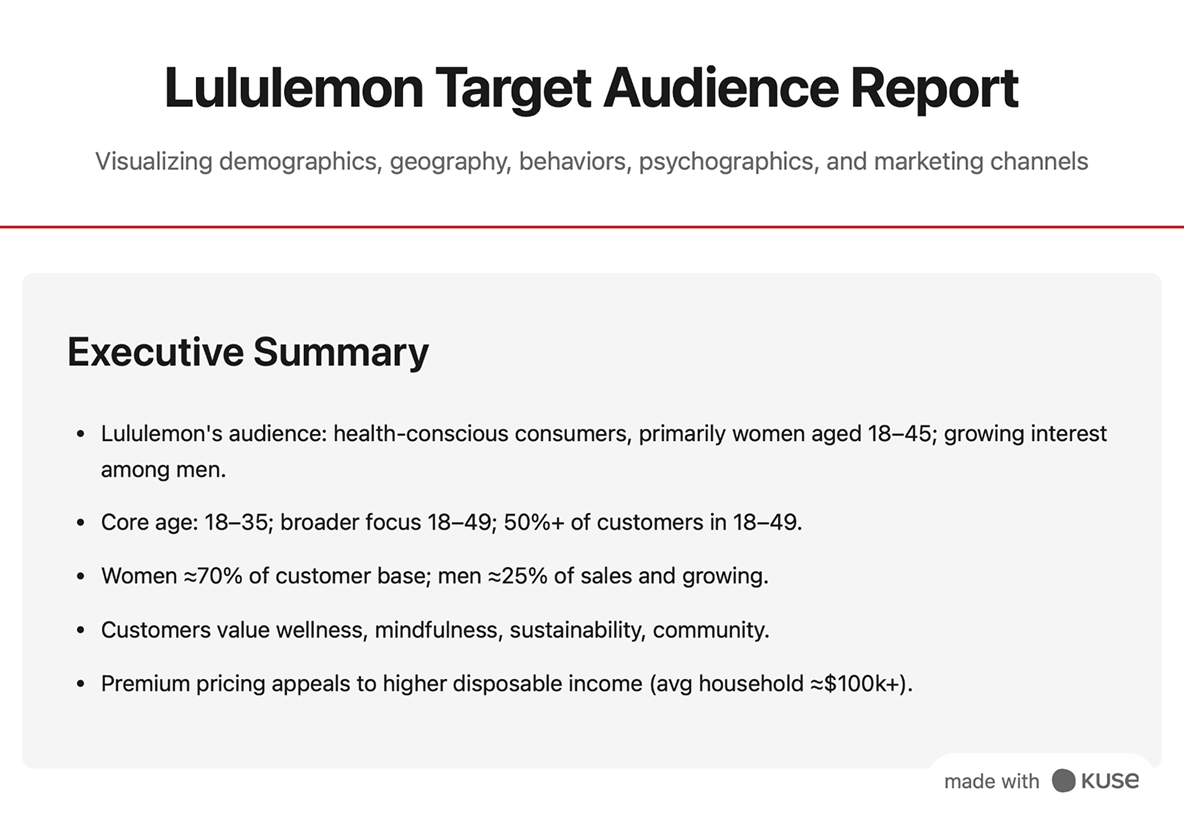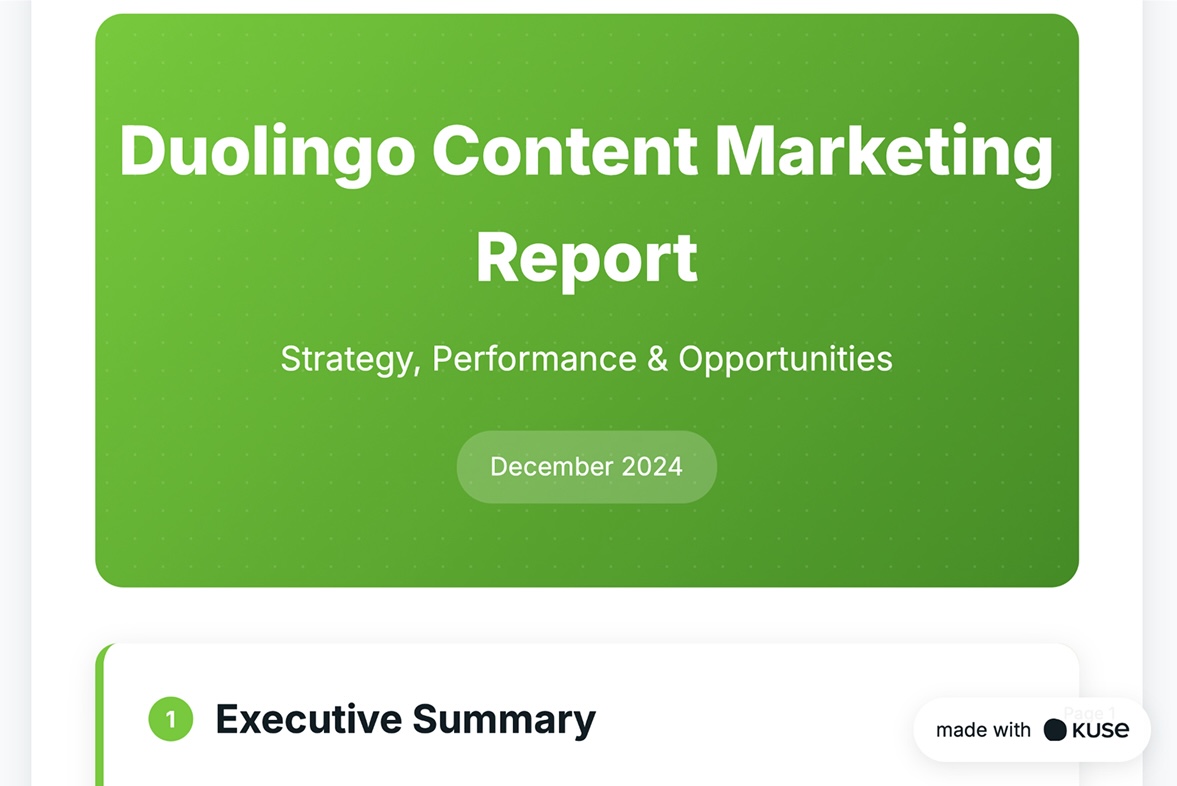What is the Best Framework to Define Target Audience in 2025
Learn the best framework to define your target audience in 2025. Compare target market vs audience, explore types, steps, and examples from Coke, Lululemon, and Spotify.

What Is a Target Audience?
A target audience is the specific group of people most likely to engage with your brand. This group is defined by characteristics such as age, income, education, lifestyle values, or buying behaviors. Instead of trying to market to “everyone,” companies focus on well-defined audiences that represent the highest opportunity for growth.
When businesses understand their target audiences, they can create messages that resonate more deeply, increase efficiency, and foster brand loyalty.
Target Market vs. Target Audience
Marketers often confuse “target market” and “target audience,” but these two terms serve different purposes. A target market is the broad group of consumers who might purchase your product, while a target audience narrows that group down to the specific people a given campaign or message is built for.
Think of it this way: your target market shapes long-term product and brand positioning, while your target audience shapes tactical marketing execution, such as ad copy, creative visuals, or social campaigns.
Why Defining Your Target Audience Matters
Defining your target audience is more than a marketing exercise, it’s a business-critical decision. Without it, brands waste resources chasing broad audiences, often leading to generic messaging and poor ROI.
Increased Efficiency: According to HubSpot, companies that prioritize accurate audience targeting report up to 73% higher conversion rates compared to those that don’t. By narrowing focus, campaigns reach the right people at the right time.
Personalization at Scale: Audiences expect tailored communication. Salesforce reports that 66% of customers expect companies to understand their needs. Defining target audiences enables personalization that meets this expectation.
Improved Loyalty: When audiences feel understood, they are more likely to remain loyal. McKinsey research shows personalization can reduce acquisition costs by 50% and increase customer loyalty by 30%.
Cross-Team Alignment: A clear definition of who you serve helps align marketing, sales, and product teams. Everyone works toward the same persona, which reduces wasted effort and increases customer satisfaction.
In short, defining your target audience creates focus, relevance, and impact across the business.
Types of Target Audiences
Target audiences can be defined in many ways, but here are the most common types marketers rely on:
Demographic Audiences: Defined by measurable traits like age, gender, education, and income. For example, a financial planning app may target high-income millennials starting families.
Psychographic Audiences: Focus on personality, values, lifestyle, and interests. A fitness brand might target consumers who value mindfulness and holistic wellness.
Behavioral Audiences: Based on behaviors like frequency of purchase, product usage, or brand loyalty. E-commerce companies often target “cart abandoners” or repeat buyers with tailored campaigns.
Geographic Audiences: Defined by location, from neighborhoods to global regions. A food delivery service might target urban consumers within specific zip codes.
Interest-Based Segments: People grouped around hobbies, passions, or online communities, like gamers, outdoor enthusiasts, or book lovers.
Purchase Intention Segments: High-value prospects who show clear signals of readiness to buy. These audiences are ideal for conversion-driven campaigns.
Subcultures: Niche communities connected by identity or shared causes. For example, sustainable fashion brands often target eco-conscious subcultures who demand ethical production.
Each type of audience offers unique insight into where to reach them, what content resonates, and how to structure offers.
How to Analyze and Define Your Target Audience: Step-by-Step Framework
Defining your target audience requires a structured process. Below is a practical five-step framework you can apply:
Step 1: Clarify Business Objectives
Start by asking: What does success look like for this campaign or product? Whether it’s brand awareness, lead generation, or conversions, your goals dictate how narrow or broad your audience definition should be.
Step 2: Collect Data Across Channels
Leverage both quantitative and qualitative insights. Use analytics platforms (Google Analytics, CRM reports), social media insights, and customer surveys to uncover patterns in demographics, psychographics, and behavior. The more data-driven the approach, the more precise your audience profile will be.
Step 3: Segment the Market
Divide your broader market into smaller, more manageable groups. Segmentation can be based on demographics (e.g., Gen Z vs. Millennials), behaviors (e.g., frequent buyers vs. one-time customers), or needs (e.g., cost-sensitive vs. premium seekers). Effective segmentation allows you to prioritize the most promising clusters.
Step 4: Build Audience Personas
Translate segments into detailed personas that represent your ideal customers. Personas should include:
Demographics: age, gender, education, occupation.
Psychographics: motivations, values, lifestyle.
Behaviors: purchasing habits, preferred channels, content engagement.
Pain Points & Triggers: what motivates purchase or brand switching.
Step 5: Test, Measure, and Refine
No framework is static. Run small-scale campaigns to test assumptions. Evaluate performance metrics like engagement, conversion, and customer feedback. Use these insights to refine personas and optimize targeting over time.
This cycle ensures your definition evolves with customer behavior and market conditions.
Real-World Target Audience Examples
Target audience definitions come alive when applied to actual brands. Here are three globally recognized companies that illustrate different approaches:
Coca-Cola Target Audience
Coca-Cola has one of the broadest markets in the world, but its campaigns often zero in on specific audiences:
Coke Zero appeals to young adults seeking sugar-free options, using energetic, youth-focused ads.
Classic Coke targets families and nostalgic consumers, emphasizing heritage and tradition.
Regional campaigns adapt messaging to cultural moments, such as “Share a Coke,” where bottle labels featured locally popular names.
Coca-Cola demonstrates how a brand can balance global reach with localized, audience-specific tactics.
Lululemon Target Audience
Lululemon began as a brand for female yoga practitioners but has since expanded its appeal:
The primary audience remains affluent women aged 20–40, health-conscious and community-driven.
The secondary audience includes men, athletes, and a growing demographic interested in mindfulness and wellness.
Marketing content emphasizes psychographic values like mindfulness, self-care, and personal growth, creating loyalty beyond the product itself.
Lululemon shows the power of building a brand around lifestyle and values, not just apparel.
Spotify Target Audience
Spotify relies on data-driven personalization to engage its core audience:
Primary audience: Gen Z and Millennials, who consume music streaming daily across mobile and social platforms.
Secondary audience: Podcast listeners and playlist sharers across global markets.
Campaigns like Spotify Wrapped transform user data into personalized, shareable stories, reinforcing both individual connection and global virality.
Spotify’s approach illustrates how personalization and cultural integration make audiences feel seen, valued, and celebrated.
Conclusion
Defining your target audience is essential to efficient, personalized, and impactful marketing. It informs not only messaging but also product design, distribution, and long-term growth strategies.
To make the process easier, modern tools can help. Platforms like Kuse allow businesses to build a centralized knowledge base where multimedia data—surveys, analytics, interviews, videos—can be stored, organized, and quickly transformed into structured audience frameworks. This ensures teams can move faster, align better, and continuously refine their understanding of who they serve.
FAQs
1. How to Find Your Target Audience?
Analyze existing customers, conduct surveys, use web and social analytics, and test campaigns across different segments. Combine hard data with qualitative insights for accuracy.
2. What are the four types of target audiences?
The four foundational types are demographic, psychographic, behavioral, and geographic. Marketers often expand beyond these to include interests, purchase intent, and subcultures.
3. What is an example of a primary target audience?
Lululemon’s core audience of affluent women aged 20–40 who prioritize wellness and mindfulness is a clear example of a primary target audience.



